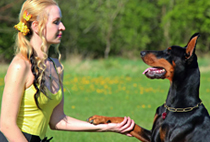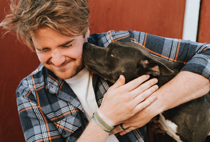3 Reasons Why Dogs Turn in Circles Before Lying Down

- 4 March, 2022
- Posted by Admin
- Dogs, Cuddly Tails, News
Dogs, unlike humans, do not simply fall asleep on their beds when they are exhausted. Instead, they spend a considerable amount of time making their bed before resting for the night. Sleepy dogs spin in circles and dance while falling asleep. This bedtime dancing routine is a bit compulsive for them, and sleep escapes them until they finish it.
Dogs enjoy spinning before lying down for various reasons, including instinct and comfort. Let's look at the science behind dogs' spinning and when it's a problem.
1. Creating a Comfy Bed
One theory is that dogs circling behavior evolved due to dogs lying on tall grass or a bunch of leaves in the past. So, what is the purpose of circling before lying down? It causes the dog to step on tall grass or leaves to create a comfortable surface, potentially even protecting the rough grass. A dog's sleeping quarters were most likely rough and draughty in the past.
Why do dogs still circle if they are now provided with comfortable beds? Dogs are a type of creatures who stick to their routines. Regardless, the instinct still exists, and some dogs perform the ritual even when lying on hard surfaces. It's the canine equivalent of the human evening ritual of fluffing the cushion.
2. Temperature control
In the outdoors, denning behaviors can assist dogs in locating an optimum sleeping temperature. For example, a dog will wander in circles and scratch away the top layer of grass and soil to expose the more excellent ground beneath. A dog may circle in cold weather to help them "ball up" and conserve body heat. Packs may even form a ball together!
3. Claiming Personal Turf
The whole grass flattening routine, on the other hand, could have been a dog's manner of claiming his territory. The dog was likely providing other dogs a visual sign that the region had been claimed by flattening the area. Another concept occurred when dogs mark their territory with their urine, but because they don't want to urinate where they lay down, they must find another means to claim their sleeping areas.
Domesticated dogs still regard sleeping areas as valuable resources, and conflicts can break out over them, so it wouldn't be surprising if dogs were already guarding them in the past. In addition, flattened grass sections may have served as a non-confrontational strategy for dogs to claim ownership of a specific site in the past.
As can be seen, there are several theories, but one thing appears certain: circling behavior must have served a specific goal to get this far: providing a safe, comfortable place to sleep.
Thanks,
CuddlyTails team







